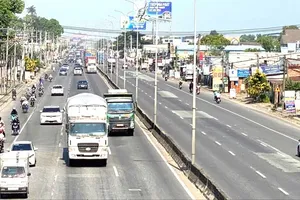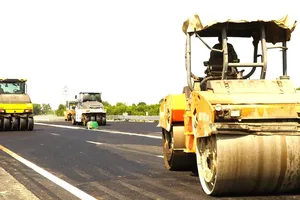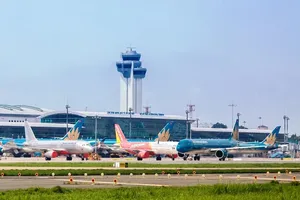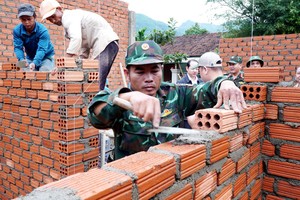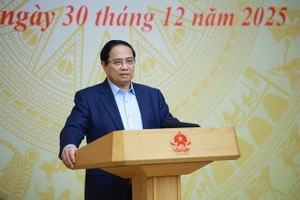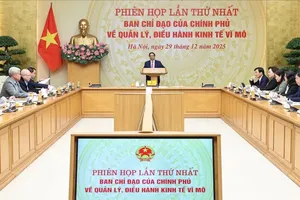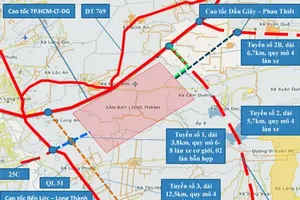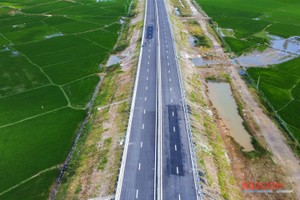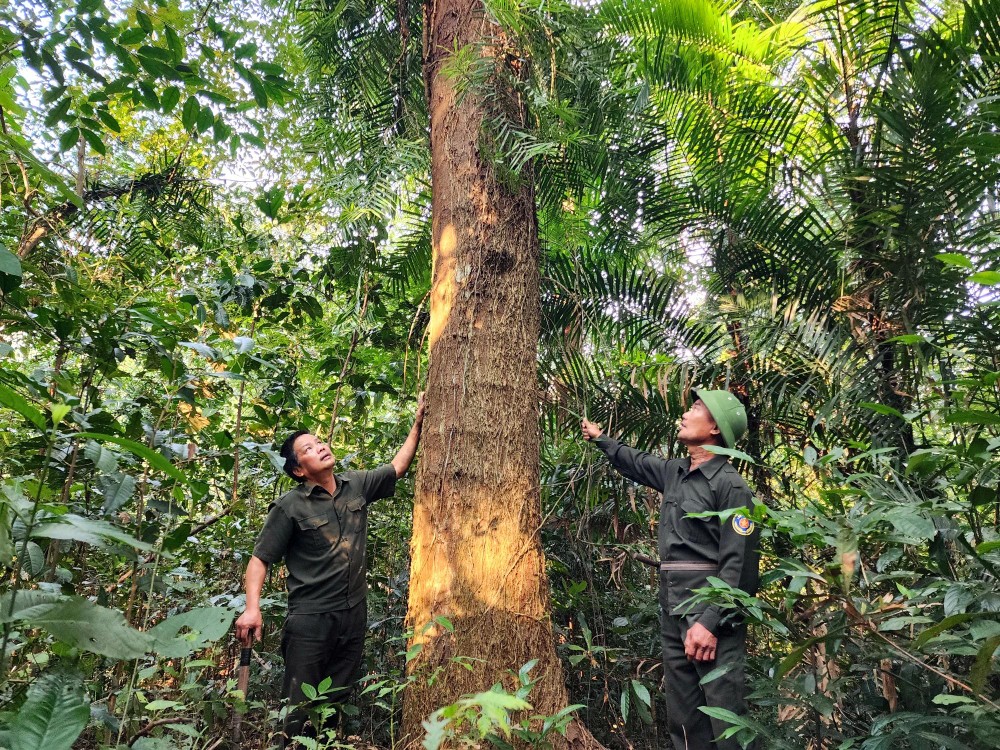
Nowadays, the descendants of characters in the story have a new way to continue eating forests by selling carbon credits from planting large timber forests in a fundamental and sustainable way.
From the Government’s Decree No. 107/2022/ND-CP on piloting the transfer of carbon credits earned from the reduction of global greenhouse gas emissions to help one or more countries meet climate targets and financial management of agreements in the North Central region, the Ministry of Agriculture and Rural Development has transferred 10.2 million tons of CO2 in the North Central region to the International Bank for Reconstruction and Development (IBRD).
From there, the National Fund for Forest Protection and Development will receive US$51.5 million from the Carbon Fund through IBRD, then coordinate nearly $50 million to localities according to the present regulations. Among them, Quang Binh Province transferred more than 2.4 million tons of CO2 to receive about VND235 billion in the period 2023-2025. In 2023 alone, Quang Binh will receive VND82.4 billion.
Director Phan Hong Thai of Phong Nha - Ke Bang National Park said that the park was paid more than VND20 billion for selling carbon. The park management board has transferred this money to the organizations, households, and communities which contracted with the park to protect and conserve large areas of natural forest. Before, organizations, households, and communities did not have this money so this sparked them in forest protection.
In Quang Binh, the commune with the highest forest area sold for carbon credits is Thuong Trach Commune in Bo Trach District with a total value of more than VND2.7 billion. Chairman Dinh Cu of Thuong Trach Commune People's Committee said that this money helps people in the commune take care of their lives and also makes people more determined to protect the forest.
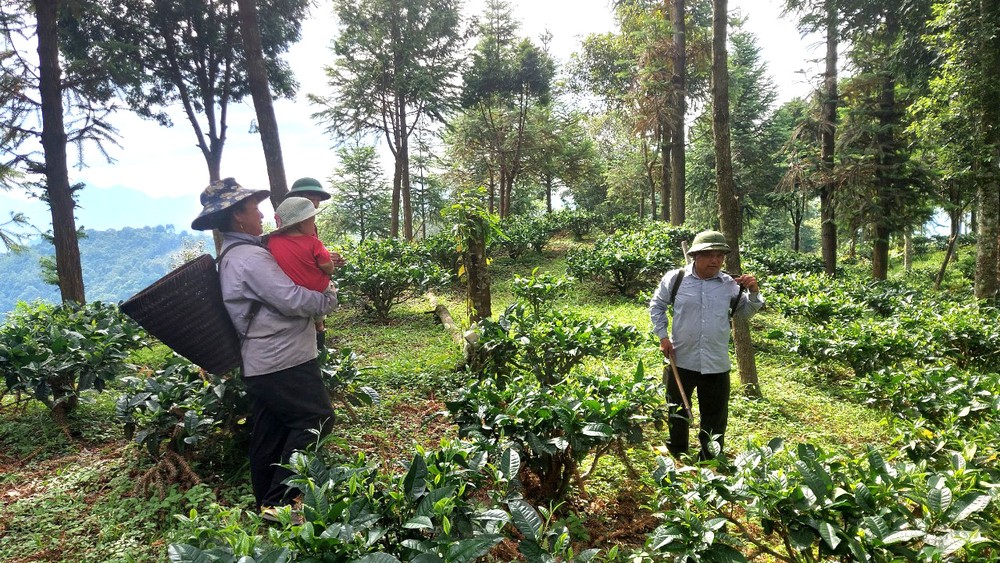
Meanwhile, resident Ho Van Kien of the Community Forest Protection Group of Ruong Village in Quang Tri Province’s Huong Hoa District said that in addition to forest protection money paid by the State, people now receive money from selling carbon credit, their incomes increase so they are more excited about protecting the forest.
Delighted about people benefiting from forests through selling carbon credits, Deputy Director Phan Van Phuoc of the Department of Agriculture and Rural Development of Quang Tri Province said that this is an important resource for indigenous people who have not only contributed substantially to supporting the national target programs for forestry development but also forest protection and raising awareness of forest preservation. Meanwhile, Quang Nam province is piloting carbon credit trading on the voluntary market with strict procedures.
Vice Chairman Ho Quang Buu of Quang Nam Provincial People's Committee revealed that when the voluntary agreement is implemented, the price of carbon credits will be higher in the coming time.
Currently, localities sell 1 ton of carbon worth US$5. But later, when a market is formed, the price will be higher. At that time, localities will have more funding to support better forest protection forces, and forest growers will have higher incomes.
In the midland region of Quang Nam Province’s Hiep Duc District, this is the locality that accounts for more than half of the large timber plantation areas with forest standard certification (FSC) in Quang Nam province with more than 3,833 hectares.
At Mr. Dang Dinh Hiep's acacia mangium garden in Hiep Thuan Commune, trees in the garden were planted in 2019; they are now large wood. Mr. Hiep smiled saying that at first, when growers started planting large trees, they were very confused because it took a long time, but after one cycle, they gained higher profits from higher price than the earnings from short-term planting; thus, they continued planting trees.
Hiep Thuan Agricultural Cooperative in Hiep Duc District is considered a pioneer in developing large timber forests with 1,200 hectares, of which 45 percent of the area has FSC certification. Currently, the cooperative buys all products of 221 households that affiliated with the cooperative to plant forests. Moreover, 221 households signed forest insurance contracts due to natural disasters, and they were given seeds and instructions on how to grow trees.
Similarly, Thua Thien Hue province has more than 12,400 hectares of large timber forests with acacia species and native trees, with more than 11,900 hectares of FSC certified, including about 940 hectares of natural forests.
Chairman Vo Van Du of the Forest Owners' Sustainable Development Association of Thua Thien Hue (TTH- FOSDA) Province, said that planting large timber forests with FSC certification not only brings high economic efficiency but also contributes to the protection of the ecological environment, limiting floods and landslides.
In particular, planting large timber forests with FSC certification has greatly contributed to biodiversity preservation and maintenance of ecosystem functions and integrity, stabilization of natural ecosystems, and minimizing the harmful effects of climate change.
Many households in the production forest planting area in Cham village in Huong Ho ward of Thua Thien Hue Province’s Huong Tra town revealed of a large wood forest of hundreds of hectares that is nearly 10 years old.
Villager Bui Van Son in Cham village said that for a small group of trees for raw wood chips with a cycle of 4-5 years, the average plant density is 2,500 trees per ha generating about 80 cubic meters of wood per hectare per year. After deducting costs of about VND25 million a ha, forest growers enjoyed a profit of VND60 million in 5 years per hectare.
However, if a large wood forest is planted with double thinning, the final density is 1,100 trees a ha generating a yield of about 200 cubic meters after 8-10 years, 2-2.5 times higher than a small wood forest. After deducting costs, each hectare of profit brings from VND250 million to VND300 million for 10 years.
Moreover, when planting large timber forests with FSC certification, forest owners are not forced to price by traders because businesses will buy all products. In the mountainous district of Huong Son of Ha Tinh Province, the forest sections of Huong Son Forestry and Services Company Limited are developing well.
According to Head of Huong Son Forestry and Services Company’s Science and Investment Cooperation Department Tran Trung Anh, the company is assigned by the State to manage, protect, and take care of 19,867.36 hectares. Of these, 19,125 hectares are natural forest while the remaining area is planted forest and non-forest land, stretching across the communes of Son Hong, Son Tay, and Son Kim 1. It is estimated that the forest has a wood reserve of 2.2 million cubic meters.
People believe that they can make money from protecting sustainable forests in the near future. This sustainable way not only brings high income but also contributes to forest conservation. The indigenous culture of each village is passed on to descendants for a long time.

